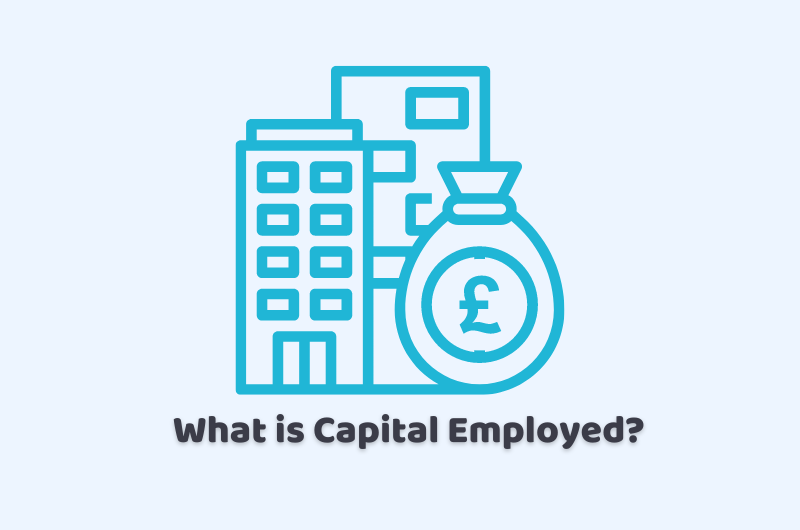
11/07/2023employment allowance , Finance
Capital employed is a kind of matric that is financial and finds out how much money a company has invested in its operations. It is calculated by subtracting current liabilities from total assets, which gives you the exact idea that how much money a company has invested to keep its operations going. It is an important metric for investors and analysts because it provides insight into how efficiently a company is using its assets to generate profits. It can also help to identify trends in the performance of the company and to compare its performance to other companies in the same industry.
Reach out to our intelligent and clever-minded guys to get the answer to your queries in the UK, we will get to your answers quickly. We will help to decide how to deal with your tax implications.
What is Capital Employed?
Capital employed in the UK refers to the amount of money invested. Capital employed is calculated by taking a company’s total assets and subtracting its current liabilities. It represents the amount of money that the company has invested in its operations and is using to generate profits. The higher the capital employed, the more potential a company has to generate profits.
Calculate Capital Employed – What is the formula?
The formula to calculate capital employed is Capital Employed = Total Assets – Current Liabilities
This formula shows how much is being invested in a company. Total assets include all of a company’s assets. Current liabilities include all the money that a company owes to others within a year, such as accounts payable, short-term loans, and taxes.
It is a useful metric for investors and analysts because it shows how much it has available to generate profits. A higher capital employed indicates that a company has more resources to generate profits, but it can also indicate that a company is taking on more risk.
What Does This Tell You?
Capital employed is calculated by subtracting current liabilities from total assets, which gives you the amount of money that a company has invested in its operations. This includes both debt and equity financing. A company with a high capital employed may be generating a lot of profits, but it may also be taking on a lot of debt to finance its operations.
A company with a low capital employed may be generating fewer profits, but it may also be less risky because it is not taking on as much debt. Capital employed is also useful for comparing companies within the same industry. Companies with similar amounts of capital employed may be competing for the same customers and facing similar challenges.
Calculating Return on Capital Employed (ROCE)
The formula to calculate the return on capital employed (ROCE) is ROCE = Operating Profit / Capital Employed
Operating profit is a company’s profit after deducting operating expenses but before deducting taxes and interest expenses. ROCE is a useful metric for investors and analysts because it shows how efficiently a company is using its capital to generate profits. A higher ROCE indicates that a company is generating more profits relative to the amount of capital it has invested in its operations.
What is the Average ROCE?
Average ROCE is the average return on capital employed over a certain period of time. It is calculated by taking the sum of the ROCE for each year and dividing it by the number of years.
Average ROCE is a useful metric for investors and analysts because it shows how efficiently a company has been using its capital to generate profits over a period of time. It can also help to identify trends in a company’s performance and to compare its performance to other companies in the same industry.
What is a Return on Capital Employed?
What is considered a good return on capital employed (ROCE) can vary. However, a ROCE that is higher than the company’s cost of capital is generally considered to be good.
If a company earns a ROCE that is higher than its cost of capital, it is generating more profits than it needs to in order to satisfy its investors and creditors.
In general, a ROCE that is higher than 10% is considered to be good, but this can vary depending on the industry and the company’s stage of growth. For example, a company that is in a mature industry may have a lower ROCE than a company that is in a high-growth industry.
Calculating Capital Employed from a Balance Sheet
To calculate capital employed from a balance sheet, you need to subtract current liabilities from total assets. Total assets include all of a company’s assets. Current liabilities include all the money that a company owes to others within a year, such as accounts payable, short-term loans, and taxes.
The formula is Capital Employed = Total Assets – Current Liabilities
Once you have calculated the capital employed, you can use it to calculate other financial ratios such as return on capital employed (ROCE).
The Bottom Line
Now that you have gathered a fair amount of information about what is capital employed and how it works in the UK, we can bring the discussion towards wrapping up. Capital employed is important to be aware of because of the conscious investment by the companies. We hope these few minutes of reading will help you to develop a better understanding of capital employed and how you will be able to maximise your benefits in the future.
Our team of professional members loves to hear out your problems and find out the possible and suitable solutions quickly for small businesses’ accounting problems. Call us or email us today.
Disclaimer: The information provided in this blog is about the capital employed in the UK, including the text and graphics, in general. It does not intend to disregard any of the professional advice.

